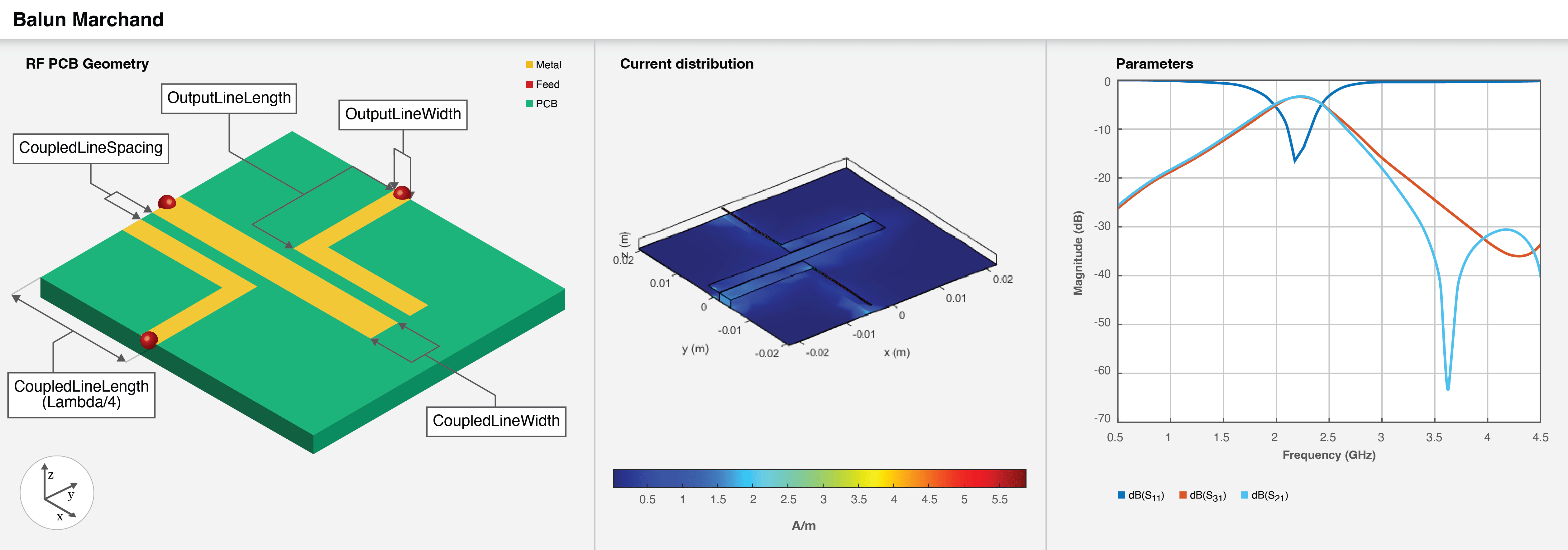balunMarchand
Description
Use the balunMarchund object to create a Marchand balun in the
microstrip form with an unbalanced and balanced output. There is a 180 degrees phase
difference between the input and the output ports.

Baluns are used to connect an unbalanced source line to a balanced load or vice-versa enabling you to create a matching transition between balanced and unbalanced transmission lines. A Marchand balun has a pair of quarter-wavelength coupled lines of quarter wavelength for dividing and combining signals with the same amplitude and opposite phase.
Creation
Description
balun = balunMarchand creates a Marchand balun in the
microstrip form with default properties for a resonant frequency of 2.2 GHz.
balun = balunMarchand(
sets Properties using one or more
name-value arguments. For example,
PropertyName=Value)balunMarchand(OutputLineLength=0.016) creates a Marchand balun with
an output line length of 0.016 meters. Properties not specified
retain their default values.
Properties
Object Functions
charge | Calculate and plot charge distribution |
current | Calculate and plot current distribution |
feedCurrent | Calculate current at feed port |
layout | Plot all metal layers and board shape |
mesh | Change and view mesh properties of metal or dielectric in PCB component |
shapes | Extract all metal layer shapes of PCB component |
show | Display PCB component structure or PCB shape |
sparameters | Calculate S-parameters for RF PCB objects |
RFConnector | Create RF connector |
optimize | Optimize pcb catalog object |
EHfields | Electric and magnetic fields of PCB components |
Examples
References
[1] Pozar, David M. Microwave Engineering. 4th ed. Hoboken, NJ: Wiley, 2012.

